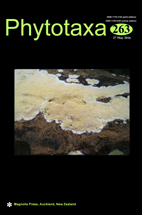Abstract
Ixora Linnaeus (1753: 110) is the third largest genus of the family Rubiaceae with more than 500 species distributed in tropical and subtropical regions of the world (Mouly et al. 2009). The genus Ixora is easily recognized by its articulate petioles, tetramerous flowers, bilobed stigma, uni-ovulate locules and seeds with a large adaxial hilar cavity (De Block 2008). In India, the genus is represented by 47 species (Barbhuiya et al. 2012; Murugan & Prabhu 2014; Karthigeyan & Arisdason 2015). Among of them, Ixora agasthyamalayana Sivadasan & Mohanan (1991: 313), I. beddomei Husain & Paul (1986: 87), I. gamblei Ramachandran & Nair (1988: 220), I. johnsonii Hooker (1897: 139), I. lawsonii Gamble (1920: 247), I. malabarica (Dennstedt 1818: 37) Mabberley (1977: 539), I. manantoddii Husain & Paul (1991: 16), I. mercaraica Husain & Paul (1986: 88), I. monticola Gamble (1920: 246) and I. sivarajiana Pradeep (1997: 315) are endemic to Western Ghats (Singh et al. 2015). During the verification of Ixora species from the Western Ghats of Tamil Nadu, the author found that the name Ixora monticola Gamble (1920: 246) is an later illegitimate homonym of I. monticola (Hiern 1870: 177) Kuntze (1891: 287). Therefore, a new name, Ixora ravikumarii Kottaim., is proposed here as a replacement name for I. monticola Gamble.

